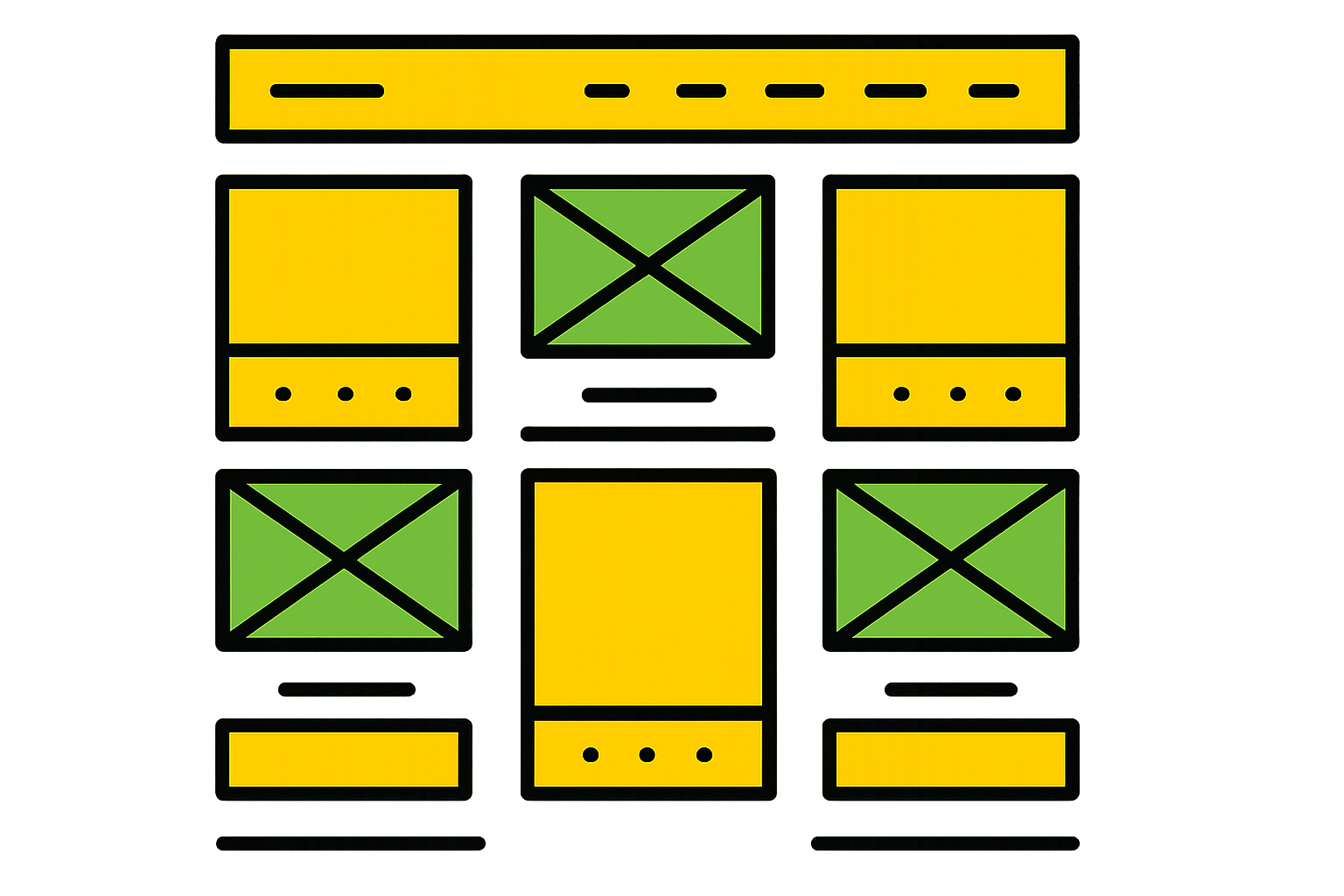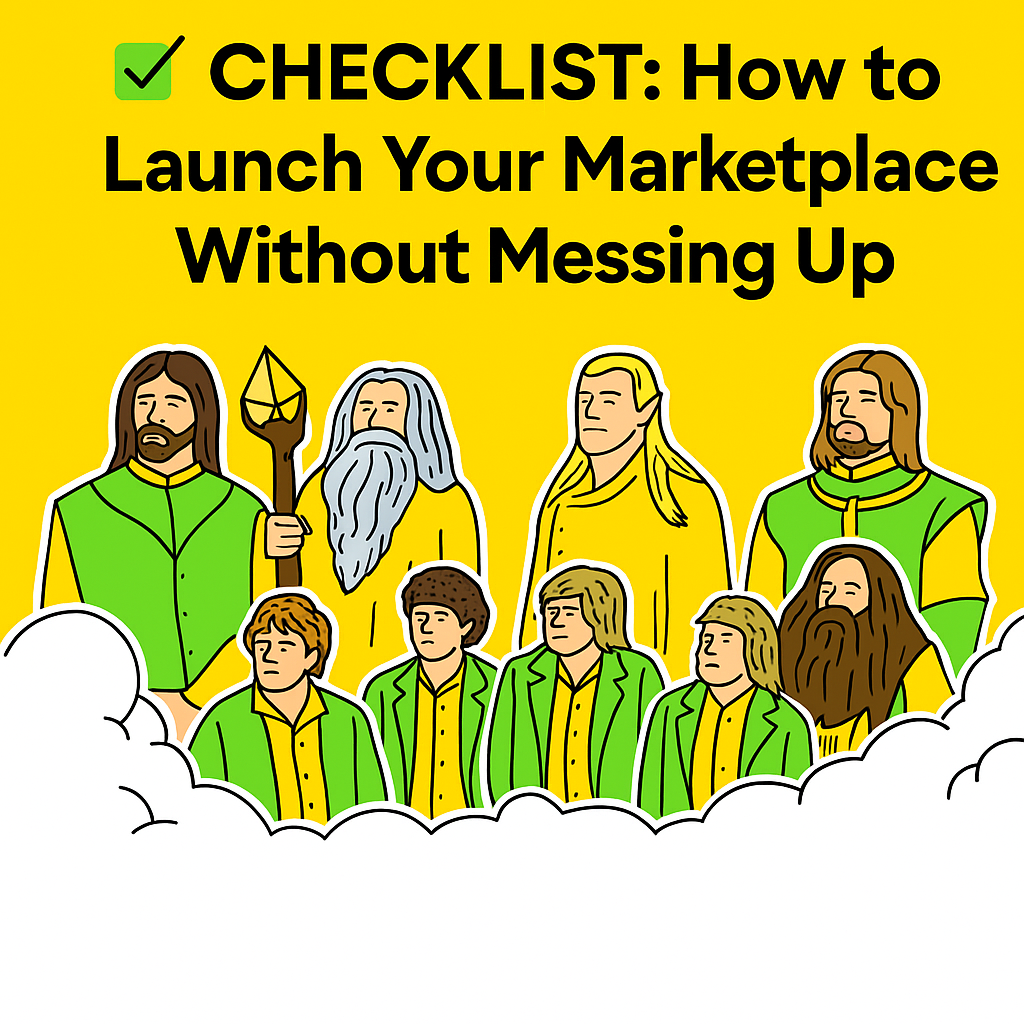Building a marketplace sounds exciting. And it is — until it eats your time, money, energy, and sanity.
That’s why we made this step-by-step guide — to help you figure out where you are in the process, what you’ve missed, and what you need to do to finally launch without burning out or blowing up.

Step 1: Pick a niche
The success or failure of your marketplace depends heavily on your niche.You’ve got two extremes:
1. Very broad niches — think OLX, Fiverr, Envato, Amazon or Alibaba. But here you’re up against monsters with bottomless budgets.
2. Ultra-niche — a marketplace for coins, stamps, or finding plumbers. Cute… but where’s the audience?
The sweet spot is a niche that:
- Solves a real problem
- Has enough users
- Doesn’t already have a dominant player
Choose a space where you actually know what you're doing. It'll save you a ton of pain later.

Step 2: Build from scratch or use a ready-made platform?
You have two roads:
1. Custom development — long, expensive, unpredictable.But sure, everything is tailored to your idea.
2. Use a CMS or platform like Cornbit — much faster, cheaper, tested by others.
Three things to consider:
- Budget
- Speed to launch
- Scalability & quality
Going custom only makes sense if you’ve done this before or have a killer dev team in-house.
Otherwise, ready-made is your best bet to test if your idea’s even viable.

Step 3: Draft a business plan
Yes, we know… boring. But trust us — no plan = chaos.
You’ll need to budget for:
- Domain, hosting, SSL...
- CMS or custom dev
- Plugins, updates, backups
- Content, moderators, SEO, ads, tech and client support…
Even if you’re a solo founder now, sooner or later you'll need help. Better to plan ahead than get wrecked by surprise expenses.

Step 4: Set up your site
Domain: Simple. Memorable. Ideally tied to your local market.
Hosting: Depends on your CMS and expected load. Don’t go cheap here.
SSL: Mandatory. No SSL = no trust = no traffic.
Important: if you're not ready to launch — block public access. A half-baked site that gets indexed will ruin your SEO karma for months.

Step 5: Add content
A blank marketplace is a dead marketplace.No sellers? No buyers.No buyers? No sellers.Welcome to the chicken-or-egg paradox.
Solutions:
- Add content yourself (manually or via import)
- Partner with a data source
- Use parsing or scraping (ethically, of course)

Step 6: SEO + GEO
Traffic is your fuel. And SEO is the first tank you need to fill.
Here’s the checklist:
- Build your semantic core — the real queries people type into Google
- Write proper meta tags — Title, Description, and alt-text for images
- Create content that works for both humans and search bots
- Don’t forget your robots.txt — really, don’t
- Use macros for region-specific content like “Buy tools in London”Make sure your system handles grammar, prepositions, and local logic properly.
- Before going live, have an SEO expert review your site. Just once — it’s worth every penny
And now there’s a new game changer — GEO (Generative Engine Optimization).
That’s how you optimize for LLM-powered search tools like ChatGPT, Perplexity, Gemini, and others.
We’ll break down GEO in detail in a separate article — stay tuned.

Step 7: Test your site
Walk in your user's shoes:
- Register
- Add a listing
- Do it on desktop and mobile
If you’re using a well-tested CMS with few custom edits, this step might be short.
But test anyway — no one likes broken flows.

Step 8: Go live
Unleash your creation on the world.
Let people in. The more, the better.
Also, don’t forget:
- Add Google Analytics / Hotjar / etc.
- Connect to Google Search Console for indexing

Step 9: Promotion
Value = Content + Active Users
Visibility = Word of Mouth + Ads.
If your user base is still small — kick it off with targeted promotion:
- Paid ads (Google, Meta, TikTok — whatever fits your audience)
- Partnerships with influencers or niche communities
- SMM: short-form content, threads, case studies, memes — whatever converts
Make your platform look alive and trustworthy — no one wants to join an empty marketplace.
Even 200 great listings with real photos and active sellers are better than 2000 ghost ads.
Add urgency, show social proof, and keep the feedback loop running.
As soon as traffic starts coming in — watch the data.
Double down on what works, cut what doesn’t.
We’ll go deeper into growth strategies and promo funnels in a dedicated article. Stay tuned.

Step 10: Daily & weekly ops
Congrats — you launched.
Now the real work begins.
Your post-launch routine should include:
- Moderation and spam control
- Tech and client support
- Backups and monitoring platform stability
- Growth and marketing tracking
Just building the site isn’t enough. But choosing the right platform — like Cornbit — can save you months of effort.
Final thoughts
A marketplace is like a garden.
You don’t just build it — you grow it.
This checklist is just the first layer.
We’re already working on deeper guides for launching with every Cornbit platform.🌽















